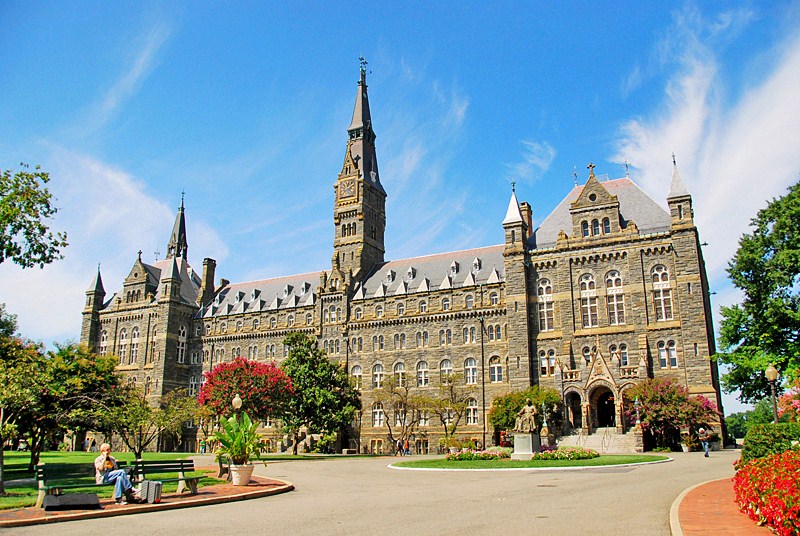Have you ever imagined seeing yourself controlling traffic for those gigantic aircraft so calmly as you’d control an orchestra? Of course, becoming an air traffic controller takes a lot of training and will. We have brought to you all the information about becoming an air traffic controller.
Air traffic controllers are the superheroes that help guide planes both in the sky and on the ground to ensure safety. Also, different kinds of air traffic controllers bear their own responsibilities and work in different settings.
So, in this article, you will learn all about being an air traffic controller and the fastest way to become one.
Fly with me!
Table of contents
- Who Is an Air Traffic Controller?
- What Does an Air Traffic Controller Do? | Job Description
- Where Does An Air Traffic Controller Work? | Air Traffic Controller Jobs
- How Much Does An Air Traffic Controller Make? | Salary And Career Outlook
- Qualities of an effective Air Traffic Controller
- What Are The Major Requirements To Become an Air Traffic Controller?
- List Of AT-CTI approved schools in U.S
- FAA Air Traffic Control Academy
- Licenses and Certifications
- What is FAA all about?
- What is the Cost of Becoming an Air Traffic Controller?
- How Long Does it Take To Become an Air Traffic Controller?
- How Hard is an Air Traffic Controller Job?
- Steps On Becoming an Air Traffic Controller
- Frequently Asked Questions
- Conclusion
- References
- We Also Recommend
Who Is an Air Traffic Controller?
Air traffic controllers are trained professionals that coordinate the movement of aircraft to maintain safe distances between them.
What Does an Air Traffic Controller Do? | Job Description
24 hours a day, 7 days a week, 365 whole days in a year, of course, air traffic controllers work their ass off to ensure safety. Also, they prevent delays in flight schedules for vehicles in the skies.
So, air traffic controllers typically do the following:
- Monitor and direct the movement of aircraft on the ground and in the air
- Control all ground traffic at airport runways and taxiways
- Issue landing and takeoff instructions to pilots
- Transfer control of departing flights to other traffic control centers and accept control of arriving flights
- Inform pilots about the weather, runway closures, and other critical information
- Alert airport response staff in the event of an aircraft emergency.
How to Become an Art Therapist | Full Guide
Types of Controllers
Depending on the job description, there are majorly 3 types of air traffic controllers:
- Tower Controllers – These professionals direct the movement of vehicles along the runways and taxiways. Most usually work from control towers, observing the traffic they control. Also, tower controllers manage traffic from the airport to a radius of 3 to 30 miles out.
- Approach and Departure Controllers – These ones ensure that aircraft traveling within an airport’s airspace maintain minimum separation for safety. So, they give clearances to enter controlled airspace and hand off control of aircraft to en route controllers.
- En-route controllers – These people control air crafts when they leave the airport airspace. They have control centers located all over the country. So, their duties include avoiding aircraft collisions and directing the aircraft almost throughout the flight.
Also, there are other air traffic controllers that work at the Control Systems Command Center, where they monitor traffic within the entire national airspace. When they spot a bottleneck, they dish out instructions to other controllers, helping to prevent traffic jams. Their objective is to keep traffic levels manageable for the airports and for en route controllers.
Where Does An Air Traffic Controller Work? | Air Traffic Controller Jobs
According to BLS, air traffic controllers held about 24,300 jobs in 2018. The largest employers of air traffic controllers were as follows:
| Federal Government | 92% |
| Support Activities for air transportation | 5 |
| Professional, scientific, and technical services | 0 |
Of course, the Federal Aviation Administration (FAA) employs most air traffic controllers.
So, different opportunities in air traffic control include:
- Terminal controller
- Tower local controller
- Terminal radar controller
- Tower flight data controller
- Ground controller
How to Become a Notary in 2024: Schools, Salary, Cost, Requirements
How Much Does An Air Traffic Controller Make? | Salary And Career Outlook
According to the Bureau of Labor Statistics, the median annual wage for air traffic controllers was $124,540 in May 2018.
The BLS further states that in 2018, the federal government employed 20,430 of the country’s 24,300 air traffic controllers. So, the employment of air traffic controllers is expected to show little or no change between 2018 and 2028.
However, job competition is expected to rise significantly because many people would be applying for a relatively small number of jobs.
Qualities of an effective Air Traffic Controller
There are a few qualities that make you stand out in air traffic control. They are:
- Concentration skills: You must be able to keep your focus even when there are several conversations going on in the office all at once.
- Decision-Making Skills: You must be able to make split-second decisions. Timing is everything.
- Math skills: You must be quite good at math and solve complicated patterns accurately.
- Problem-Solving Skills: You must understand complicated situations and discern a way out of them. For instance, directing traffic while weighing the changing weather.
- Organizational Skills: You must also know how to coordinate multiple flights. So, controllers should learn how to prioritize tasks at the control center.
- Above all, you must possess effective communication skills to give clear and concise information as well as listen carefully to pilots’ requests.
What Are The Major Requirements To Become an Air Traffic Controller?
Generally, to become an air traffic controller, candidates must meet these compulsory requirements. You must:
- be a U.S. citizen;
- undergo and pass a medical evaluation, including drug screening, and background checks;
- pass the FAA pre-employment test, which includes a biographical assessment;
- pass the Air Traffic Controller Specialists Skills Assessment Battery (ATSA); and
- complete a training course at the FAA Academy (and start it before turning 31 years of age).
How can I become a Librarian in 2024? Schools, Cost Programs & Salary
Educational Requirements
Apart from the legal requirements, to become a fully certified air traffic controller you need to have:
- Completed a Federal Aviation Administration’s Air Traffic Collegiate Training Initiative(AT-CTI) approved associate’s, bachelor’s, or Master’s degree program. Or
- Gained military experience as an air traffic controller. This typically gives you a competitive advantage. Or
- Completed either three years of progressively responsible job experience, a bachelor’s degree, or a combination of the two.
However, those who don’t have military experience will also be required to enroll in the FAA’s Air Traffic Control Academy.
According to BLS, the FAA sets guidelines for schools that offer the AT-CTI program. AT-CTI schools generally offer 2- or 4-year degrees that are designed to prepare students for a career in air traffic control.
The curriculum is not standardized, but courses focus on subjects that are fundamental to aviation. Topics include aviation weather, airspace, clearances, reading charts, federal regulations, as well as related topics.
List Of AT-CTI approved schools in U.S
- Aims Community College, Colorado
- Arizona State University, Arizona
- Broward College Pembroke Florida
- Lewis University, Illinois
- Florida State College at Jacksonville, Florida
- Hampton University, Virginia
- Green River College, Washington
- Jacksonville University, Florida
- LeTourneau University, Texas
- Community College of Baltimore County, Maryland
Courses that may be required at the bachelor’s level generally include:
- Aviation fundamentals
- Rules of Aviation
- Aviation meteorology
- Air traffic control systems
- Transportation safety
How To Become An Instagram Model
FAA Air Traffic Control Academy
Of course, receiving a bachelor’s degree is just one step to beginning a career in air traffic control.
There is also additional training required for you to undergo at the FAA Academy as well.
The FAA Academy specifically provides technical and managerial training and development for the body workforce and the aviation community. Since courses have different admissions criteria, prospective participants are admitted on a course-by-course basis.
So, the FAA Academy training takes two to five months to complete depending on your training experience, and it can take two to four years of on-the-job training to become fully certified.
Here at the FAA academy, they:
- develop and conduct training courses,
- plan, maintain and manage the FAA’s distance learning systems, and
- provide training program management and consultation services.
Candidates who complete this training program are assigned to a job location where they continue their training while working.
Licenses and Certifications
It is important for air traffic controllers to wield an Air Traffic Control Tower Operator Certificate or be thoroughly qualified and supervised as the rule states in Title 14 of the Code of Federal Regulations, Part 65.
This is gotten through passing the practical exam and meeting experience requirements after graduation from the FAA academy.
Check out Best Ph.D. Scholarship available for Aviation Students
What is FAA all about?
FAA is an acronym for Federal Aviation Administration. They are a body under the United States Department of Transportation in charge of the regulation and oversight of civil aviation within the U.S., as well as the operation and development of the National Airspace System.
What is the Cost of Becoming an Air Traffic Controller?
The average annual out-of-state cost for a bachelor program in Air Traffic Controller across all universities is $37,896 with a four-year degree total cost amounting to $151,584.
How Long Does it Take To Become an Air Traffic Controller?
FAA Academy training takes two to five months to complete depending on one’s experience, and it can take two to four years of on-the-job training to become fully certified. Some may become fully certified in five years when they take bachelor’s degree programs, while others can take eight years or more, depending on the training experience.
How Hard is an Air Traffic Controller Job?
Technically, it’s not about the stress of the job. But this job is going to test how you approach problems, handle pressure and adapt to changing situations.
The FAA regulates the hours that an air traffic controller may work. Controllers may not work more than 10 straight hours during a shift and must have 9 hours’ rest before their next shift.
Also, the mental stress of being responsible for the safety of aircraft and their passengers can be tiring. As a result, controllers retire earlier than most workers. Those with 20 years of experience are eligible to retire at age 50, while those with 25 years of service may retire earlier than that. Generally, air traffic controllers are required to retire at age 56.
How can I become an Esthetician in a Short time? Schools, Licenses, Salary & Cost
Steps On Becoming an Air Traffic Controller
Actually, there are several paths you can take to becoming an air traffic controller. Some can even decide to take an associate’s or a bachelor’s degree from the Air Traffic Collegiate Training Initiative program.
However, we have outlined a detailed step-by-step process that guides you to make that dream career as an air traffic controller.
#1 Do A Research
Take some time to make research the role that interests you and what is required to attain that role. You must first do a gut check to be sure you have what it takes to handle this career
#2 Be Sure You are Eligible
Check out the requirements and be sure you are eligible for the job. You must be at least 18 but not more than 31 years old and must be a U.S citizen among other eligibilities.
Also, you must have obtained your high school diploma.
So, do well to do your due diligence.
#3 Take the Examination
Register to take the pre-employment test. This also involves a background investigation and medical evaluation.
While applying for the air traffic controller job, if you have a military background, it can give you a strong edge.
How Can I Become a Dermatologist? Salary, Cost, and Programs
#4 Complete Your Degree Program
After applying to be a trainee, you can also further your career by taking courses in schools that offer the AT-CTI program.
AT-CTI schools offer 2- or 4-year degrees that are designed to prepare students for a career in air traffic control.
Of course, a college degree means more pay.
#5 Enroll in FAA academy
Once you have passed college-based training you will be posted to an FAA academy where your hands-on training continues until you validate and are issued your Air Traffic Controller license.
You have to finish this training before the next step.
#6 Start Working
Welcome!
Now you are ready to play your critical part in advancing aviation and save the world from a plane crash!
You will be posted to an Operational Unit where you will practice all you have learned.
Frequently Asked Questions
The truth is, this job is on the decline so there will be more competition to get these jobs. A military experience can give you the edge.
You can become an air traffic controller after graduating from the FAA academy. You can enroll in this training program after getting your high school diploma.
You must enroll in the FAA academy for training or have military experience to get the job easier.
Conclusion
Becoming an air traffic controller is not just like any other profession. Ensuring that there is no delay and overall safety in our skies is really daunting work. So, it requires some special training.
References
We Also Recommend
- Malawi Airforce Recruitment | APPLY
- Top Ten Highest Paying Jobs In South Africa
- Nigerian Air Force: Recruitment, Portal, Exams, Courses in
Does this article meet your immediate needs? if yes, kindly share it with friends. Remember to leave a comment on the comment box to express your concern or ask the question.
DISCLOSURE: This post may contain affiliate links, meaning when you click the links and make a purchase, we receive a commission.






Comments are closed.